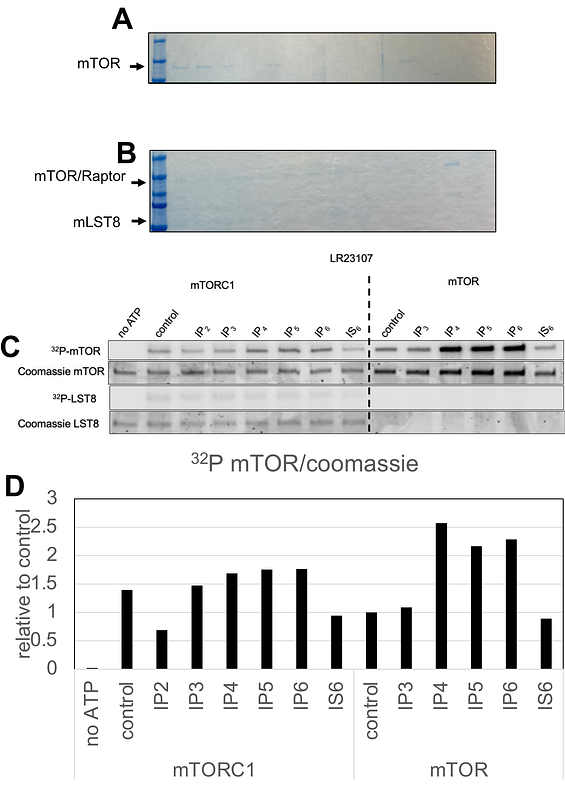Multiple inositol phosphate species enhance stability of active mTOR

Multiple inositol phosphate species enhance stability of active mTOR
Rameh Plant, L.; York, J. D.; Blind, R.
AbstractMechanistic Target of Rapamycin (mTOR) binds the small metabolite inositol hexakisphosphate (IP6) as shown in structures of mTOR, however it remains unclear if IP6, or any other inositol phosphate species, can activate mTOR kinase activity. Here, we show that multiple, exogenously added inositol phosphate species (IP6, IP5, IP4 and IP3) can all enhance the ability of mTOR and mTORC1 to auto-phosphorylate and incorporate radiolabeled phosphate into peptide substrates in in vitro kinase reactions. Although IP6 did not affect the apparent KM of mTORC1 for ATP, monitoring kinase activity over longer reaction times showed increased product formation, suggesting inositol phosphates stabilize an active form of mTORC1 in vitro. The effects of IP6 on mTOR were reversible, suggesting IP6 bound to mTOR can be exchanged dynamically with the free solvent. Interestingly, we also observed that IP6 could alter mTOR solubility and electrophoretic mobility in SDS-PAGE in the presence of manganese, suggesting divalent cations may play a role in inositol phosphate regulation of mTOR. Together, these data suggest for the first time that multiple inositol phosphate species (IP4, IP5 and IP6) can dynamically regulate mTOR and mTORC1 by promoting a stable, active state of the kinase. Our data suggest that studies of the dynamics of inositol phosphate regulation of mTOR are well justified.
